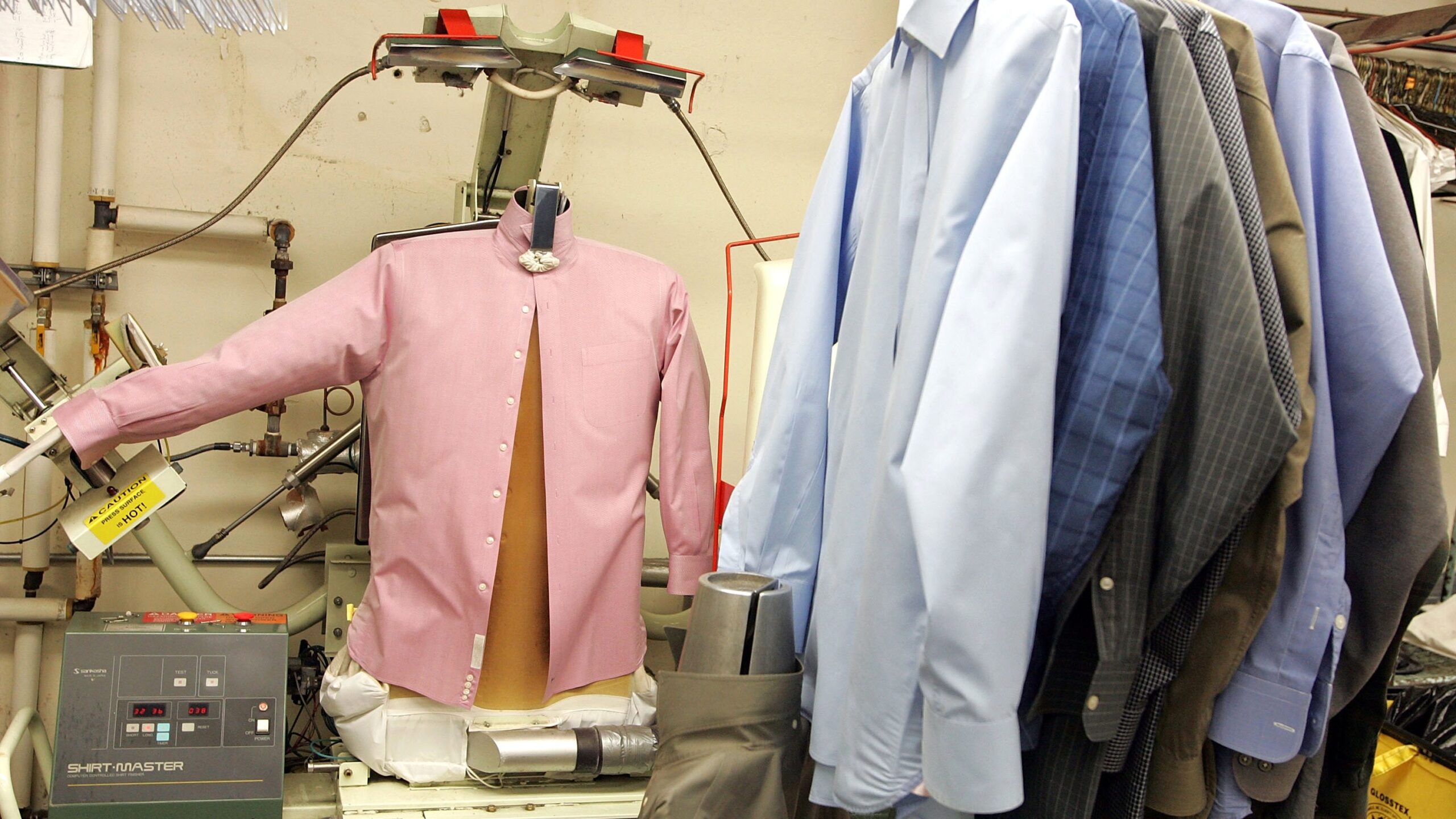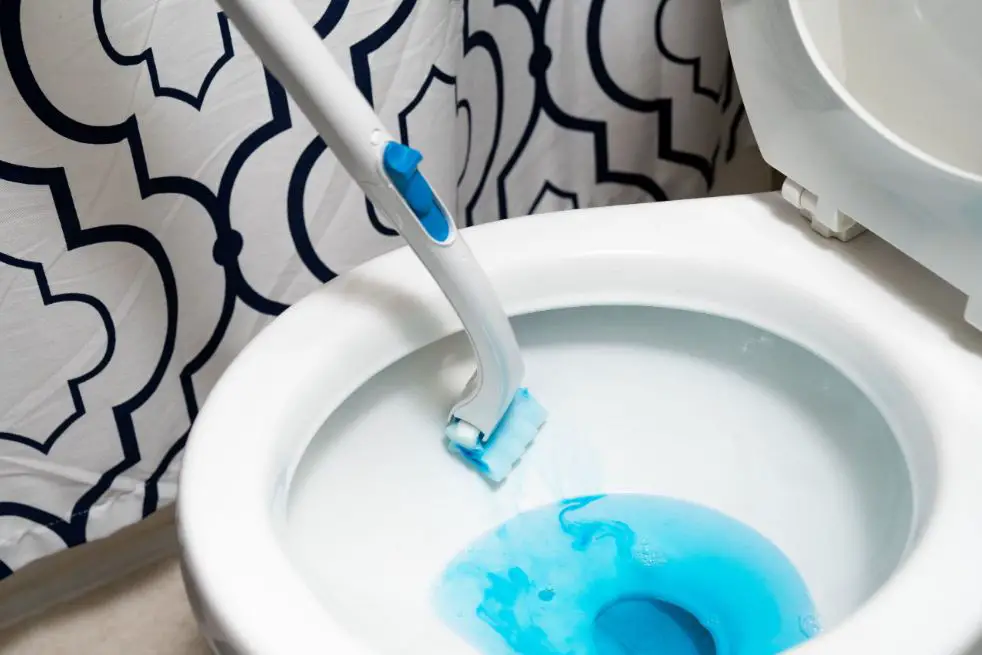Dry cleaning can potentially damage clothes due to the use of harsh chemicals and high heat. However, proper care and choosing a reputable dry cleaner can minimize the risk of damage.
Dry cleaning is a popular method for cleaning delicate fabrics such as silk or wool, as it can remove stains and dirt that regular washing might not effectively tackle. The process involves immersing the clothes in a solvent instead of water, which helps preserve the fabric’s quality and color.
However, some fabrics may be sensitive to the chemicals used in dry cleaning, and repeated exposure can lead to fading, shrinkage, or discoloration. It’s important to read the care labels on your clothes and consult with a trusted dry cleaner to ensure proper handling and minimize the potential for damage.
Understanding The Dry Cleaning Process
Dry cleaning is a safe and effective method to remove stains and clean delicate fabrics without causing damage. The process uses solvents instead of water, ensuring that your clothes maintain their shape and quality.
Dry cleaning is an essential fabric care method that keeps our clothes looking fresh, clean, and well-maintained. But have you ever wondered how it actually works? In this section, we will explore the dry cleaning process and gain a deeper understanding of the different solvents used.
Explanation Of How Dry Cleaning Works
Dry cleaning is a delicate process that uses chemical solvents to remove stains and dirt from clothing without the use of water. Unlike traditional washing, dry cleaning avoids the risk of shrinkage, color bleeding, and fabric damage for garments that cannot be machine washed or hand-washed.
Here’s how it works:
- Inspection: Professional dry cleaners carefully inspect each garment before the cleaning process begins. This helps identify any stains, loose threads, or other issues that may require attention.
- Pre-treatment: Stubborn stains, such as oil or grease, are often pre-treated with specialized solvents or spotting agents to maximize the chances of successful stain removal.
- Cleaning: The clothes are placed in a large machine with a rotating drum. The machine is filled with a chemical solvent, such as perchloroethylene (perc) or hydrocarbon-based solvents. The solvent effectively dissolves stains and dirt, lifting them away from the fabric.
- Rinsing: After the cleaning cycle, the solvent is drained, and a fresh solvent or rinse is used to remove any remaining residue.
- Drying: The cleaned garments are then gently dried using warm air or low heat. This ensures that any lingering solvent evaporates, leaving the clothes dry and ready to wear.
- Finishing touches: Finally, the garments undergo a careful inspection, and any necessary repairs or pressing are performed. This ensures your clothes look their best when they are returned to you.
Different Types Of Solvents Used In Dry Cleaning
Dry cleaning solvents play a vital role in the cleaning process, and the type of solvent used can vary depending on several factors, including the fabric type, stain type, and garment care instructions. Here are the different types of solvents commonly used in dry cleaning:
- Perchloroethylene (perc): This is the most commonly used dry cleaning solvent. Perc is effective at removing oil-based stains and provides excellent cleaning results. However, it can be harsh on certain fabrics and may have environmental implications if not handled properly.
- Hydrocarbon-based solvents: These solvents are a more environmentally friendly alternative to perc. They are gentler on fabrics and have a lower impact on the environment. Hydrocarbon-based solvents also excel at removing oil and grease stains.
- Green solvents: These solvents, which often have plant-based ingredients, are gaining popularity due to their eco-friendly nature. They are generally milder and safer to use on delicate fabrics but can still effectively remove various types of stains.
- Silicone-based solvents: Silicone-based solvents are known for their gentle and delicate cleaning properties. They are particularly suitable for sensitive fabrics and garments with decorative embellishments.
- Liquid carbon dioxide: Using liquid carbon dioxide as a dry cleaning solvent is an innovative and environmentally friendly method. It is a non-toxic option that leaves virtually no residue on the garments.
By understanding the dry cleaning process and the various solvents used, you can make informed decisions about the care and maintenance of your clothes. Dry cleaning can be a reliable solution for keeping your garments in pristine condition, ensuring they last longer and retain their original beauty.
Potential Risks Of Dry Cleaning
Dry cleaning carries potential risks that can damage clothes. It is important to be aware of the impact it may have on fabric, such as color fading, fabric shrinkage, and weakening of fibers.
Dry cleaning is a popular method for cleaning delicate and heavily soiled garments. However, it is essential to be aware of the potential risks that dry cleaning can pose to your clothes. In this section, we will explore the various risks associated with dry cleaning, including the effect of chemicals on fabric fibers, color fading and dye bleeding, and shrinkage and distortion of garments.
The Effect Of Chemicals On Fabric Fibers:
- Dry cleaning involves the use of chemical solvents to remove stains and dirt from clothes. Unfortunately, these solvents can sometimes have a negative impact on the fabric fibers.
- Solvents like perchloroethylene (perc) have been traditionally used in the dry cleaning process but are known to be harsh on certain fabrics.
- Natural fibers such as silk and wool are particularly susceptible to damage from these chemicals, as they can weaken the fibers, leading to a loss of strength and integrity.
- Over time, repeated exposure to these solvents can cause the fabric to become brittle, prone to tears, and overall more susceptible to wear and tear.
Color Fading And Dye Bleeding:
- Another potential risk of dry cleaning is color fading or dye bleeding, especially with colored or patterned garments.
- The chemical solvents used in the dry cleaning process, along with the mechanical agitation, can cause dyes to fade or bleed, resulting in a dull or uneven appearance.
- Fabrics with unstable dyes, such as those used in vintage or delicate garments, are particularly vulnerable to color loss or bleeding.
- Brightly colored garments, especially those with contrasting colors, may also be at a higher risk of color bleeding, which can result in irreversible damage to the garment.
Shrinkage And Distortion Of Garments:
- Dry cleaning can lead to shrinkage and distortion of garments, especially when exposed to high heat or excessive agitation.
- Heat can cause certain fabrics, such as wool or silk, to shrink, resulting in a change in size or shape.
- Delicate garments, such as structured dresses or tailored suits, may lose their original shape and drape due to the mechanical action of the dry cleaning process.
- Improper handling or pressing during the cleaning and finishing stages can also contribute to distortion and alterations in the original fit and structure of the garment.
While dry cleaning can effectively clean and maintain the quality of certain garments, it is important to understand the potential risks it may pose to your clothes. The effects of chemicals on fabric fibers, color fading and dye bleeding, as well as shrinkage and distortion, are all factors to consider when deciding whether to dry clean your garments.
Taking proper care, choosing reputable dry cleaners, and following specific garment care instructions are crucial in preserving the longevity and integrity of your beloved clothing items.
Steps To Minimize Damage During Dry Cleaning
To minimize damage during dry cleaning, follow these steps: 1. Read clothing labels for specific care instructions. 2. Separate delicate garments from sturdy ones. 3. Check for stains and inform the dry cleaner. 4. Trust experienced professionals who use proper cleaning techniques.
5. Inspect clothes upon pickup and address any issues immediately. By taking these precautions, you can preserve the quality of your clothes and avoid potential damage caused by dry cleaning.
Does Dry Cleaning Damage Clothes:
Dry cleaning is a popular method for cleaning clothes that cannot be washed using traditional methods. However, there is often a concern about whether dry cleaning can actually damage clothes. While it is true that certain fabrics and garments may be more susceptible to damage during the dry cleaning process, there are steps you can take to minimize the risk.
In this section, we will explore these steps so that you can ensure your clothes are well taken care of when getting them dry cleaned.
Choosing A Reputable Dry Cleaner
When it comes to dry cleaning, choosing a reputable service provider is essential in minimizing the risk of damage to your clothes. Follow these considerations when selecting a dry cleaner:
- Look for recommendations: Ask friends, family, or colleagues for recommendations on reliable dry cleaners in your area.
- Check online reviews: Research online to read customer reviews and ratings of different dry cleaners. Look for positive feedback and comments on the quality of cleaning and attention to detail.
- Look for certifications: Reputable dry cleaners often have certifications from organizations such as the Drycleaning & Laundry Institute (DLI) or the Better Business Bureau (BBB). These certifications indicate that the cleaners meet industry standards and adhere to high-quality practices.
Reading Garment Labels And Care Instructions
Properly reading and understanding the garment labels and care instructions is crucial to prevent damage during dry cleaning. Here are some key points to consider:
- Check the fabric content: Pay attention to the fabric composition stated on the label. Certain fabrics are more delicate and require special handling during the cleaning process.
- Follow the care instructions: Read the care instructions carefully and follow them accordingly. Some garments may need to be spot-cleaned or undergo special treatments before dry cleaning. Ignoring these instructions can lead to damage.
- Note any specific considerations: Look for any additional notes or warnings on the label. The manufacturer may provide specific instructions for dry cleaning, such as using a low heat setting or avoiding certain chemicals.
Pre-Treating Stains Before Dry Cleaning
Stains on clothing can be stubborn and require special pre-treatment to ensure successful removal during the dry cleaning process. Follow these steps to minimize the risk of stains becoming permanent:
- Act quickly: Treat stains as soon as possible to prevent them from setting into the fabric. Blot the stain gently with a clean cloth or paper towel to remove excess liquid or debris.
- Use appropriate stain removers: Different types of stains require specific stain removers. Consult the stain removal guide or use appropriate stain removal products based on the type of stain you are dealing with.
- Inform your dry cleaner: When dropping off your garments, inform the dry cleaner about any specific stains and the pre-treatment steps you have taken. This will help them to apply additional stain removal techniques if necessary.
By following these steps, you can minimize the risk of damage to your clothes during the dry cleaning process. Remember to choose a reputable dry cleaner, read garment labels and care instructions carefully, and pre-treat stains before dropping off your garments.
By taking these precautions, you can ensure that your clothes are well cared for and maintain their quality for longer.
Alternatives To Dry Cleaning
Dry cleaning can potentially damage clothes. However, there are alternatives like hand washing and using specialized garment bags that can help preserve and protect your clothing. These alternatives can be more gentle on fabrics and reduce the risk of damage.
**Does Dry Cleaning Damage Clothes? **
Dry cleaning is a popular method for cleaning clothes that are delicate or require special care. However, many people wonder if dry cleaning can cause damage to their garments. If you’re looking for alternatives to dry cleaning, there are a few options to consider.
We’ll discuss these alternatives, including handwashing delicate fabrics, using home dry cleaning kits, and seeking professional wet cleaning services.
Handwashing Delicate Fabrics
- Handwashing delicate fabrics is a gentle and effective alternative to dry cleaning. It allows you to have control over the cleaning process and ensures that your clothes are handled with care.
- To handwash delicate fabrics:
- Fill a basin or sink with lukewarm water and add mild detergent.
- Gently submerge the garment and agitate it by hand to loosen any dirt or stains.
- Rinse the garment thoroughly with clean water until all detergent is removed.
- Press out excess water without wringing or twisting the fabric, and reshape the garment.
- Lay it flat to dry on a clean towel or hang it up, avoiding direct sunlight.
Using Home Dry Cleaning Kits
- Home dry cleaning kits are convenient options for tackling light stains and refreshing garments without the use of harsh chemicals. These kits usually come with cleaning sheets and a bag.
- To use a home dry cleaning kit:
- Follow the instructions provided with the kit carefully.
- Pre-treat any visible stains before placing the garment in the bag.
- Add a cleaning sheet to the bag and seal it tightly.
- Tumble the bag in the dryer on a low heat setting for the recommended time.
- Remove the garment from the bag immediately after the cycle is finished and hang it up to air out.
Seeking Professional Wet Cleaning Services
- Professional wet cleaning is a specialized cleaning method that uses water and biodegradable detergents instead of harsh chemicals. It’s a safe and environmentally-friendly alternative to dry cleaning.
- When considering professional wet cleaning services:
- Look for a cleaner that specifically offers wet cleaning as a service.
- Inquire about the types of fabrics they can safely handle.
- Discuss any specific concerns or requirements you have for your garments.
- Trust the expertise of the professionals to properly clean and care for your clothes.
- Follow any care instructions provided by the cleaner to maintain the garments’ longevity.
By exploring alternatives to dry cleaning such as handwashing delicate fabrics, using home dry cleaning kits, and seeking professional wet cleaning services, you can effectively and safely clean your clothes without worrying about potential damage from traditional dry cleaning methods.
Experiment with these alternatives and find the approach that works best for your specific clothing items.
Maximizing The Lifespan Of Your Clothes
Dry cleaning can potentially damage clothes, shortening their lifespan. It’s important to understand the risks involved and take proper care to maximize the longevity of your garments.
Proper Storage And Maintenance
- Store your clothes in a cool, dry place to prevent damage caused by humidity.
- Avoid hanging heavy items, as they can stretch and distort the fabric over time.
- Use padded hangers for delicate items to prevent them from getting misshapen.
- Fold bulky sweaters and knits instead of hanging them to maintain their shape.
- Protect your clothes from dust and dirt by using garment bags or covers.
- Avoid overcrowding your closet to prevent wrinkles and creases.
- Clean and iron your clothes before storage to ensure they’re in their best condition.
Regularly Washing Non-Dry Clean Items
- Read the care labels on your clothes to determine if they can be safely washed at home.
- Separate your colored and white items to avoid color bleeding.
- Use the appropriate laundry detergent based on the fabric type and color.
- Follow the recommended temperature settings on your washing machine.
- Avoid overloading the machine to ensure thorough cleaning.
- Hang dry or tumble dry as instructed to prevent shrinking or damage.
Knowing When To Avoid Dry Cleaning
- Inspect your clothes for stains or spots that require immediate attention.
- Treat stains promptly by following recommended stain removal techniques.
- Opt for spot cleaning or handwashing for minor stains, if suitable for the fabric.
- Consider alternative cleaning methods such as steam cleaning or airing out clothes.
- Avoid unnecessary dry cleaning to prevent overexposure to chemicals.
- Determine if the fabric is sturdy enough for gentle handwashing or machine washing.
- Always remember to test a small, inconspicuous area before attempting any cleaning method.
Remember, proper storage and maintenance, regular washing of non-dry clean items, and knowing when to avoid dry cleaning can significantly extend the lifespan of your clothes. By implementing these practices, you’ll help preserve their quality and appearance for longer periods, saving you money and reducing environmental impact.
Take care of your clothes, and they’ll reward you with lasting style and durability.

Credit: coutureallure.blogspot.com
Frequently Asked Questions For Does Dry Cleaning Damage Clothes
What Are The Disadvantages Of Dry Cleaning?
Dry cleaning has some drawbacks: uses chemical solvents, can damage certain fabrics, and expensive.
Does Dry Cleaning Deteriorate Clothes?
Dry cleaning does not deteriorate clothes; it is a safe and effective method to clean delicate fabrics.
Can Dry Cleaning Damage Fabric?
Yes, dry cleaning can potentially damage fabric due to the use of strong chemicals and high temperatures.
Is It Better To Dry Clean Or Wash Clothes?
It depends on the fabric. Some clothes are best dry cleaned to maintain their quality and color.
Conclusion
It is evident that dry cleaning can potentially damage clothes if not done properly. While the process is generally safe for most fabrics, certain delicate fabrics and items with embellishments require special care. The chemicals and solvents used in dry cleaning can cause color fading, fabric shrinkage, and weakening of fibers over time.
It is crucial to choose a reputable dry cleaner who follows best practices and uses eco-friendly solvents. To minimize the risk of damage, consider alternative cleaning methods like hand washing or using a gentle cycle at home. Always read and follow the care instructions on the garment labels.
Regularly inspect your clothes for any signs of damage and bring them to a professional for repairs or alterations as needed. Taking proactive steps and being mindful of the specific needs of your clothing can prolong their lifespan and preserve their quality.
Remember, while dry cleaning is convenient, it is important to weigh the potential risks and benefits to make an informed decision about how to care for your clothes. Choose the method that best suits the fabric and maintain them properly to enjoy them for years to come.





